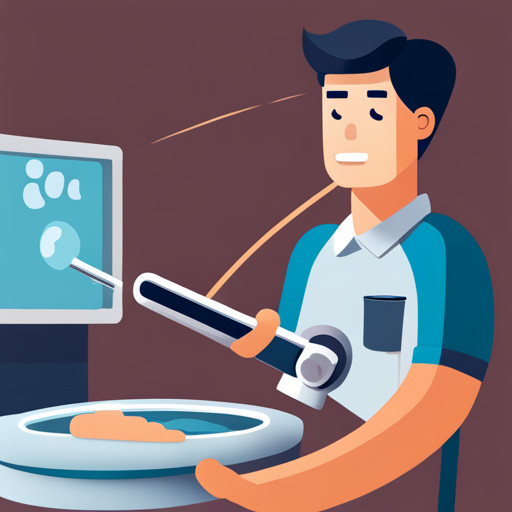The Silent Enemy: How Toxic Water Infiltrates Daily Living
The prevalence of toxic water poses a significant threat to global health. This article explores the insidious nature of water contaminants, their impact on human well-being, and methods for detection and mitigation.

Real-life experiences with polluted water are also examined, providing an in-depth understanding of this pervasive issue.
The objective is to raise awareness about the silent enemy infiltrating daily life - toxic water.
Key Takeaways
- Exposure to toxic water can lead to severe health risks such as gastrointestinal illness, reproductive problems, and neurological disorders.
- Waterborne diseases caused by pathogenic microorganisms result in millions of deaths each year, with common diseases including cholera, dysentery, and typhoid fever.
- Contaminated water sources come from various pollution sources such as industrial waste, agricultural runoff, and untreated sewage, leading to increased toxicity levels in water bodies globally.
- Consuming polluted water can lead to disease transmission, immune deficiencies, and compromised immunological defenses, with significant socioeconomic challenges and healthcare costs.
Understanding the Dangers of Toxic Water

Exposure to toxic water presents severe health risks, including but not limited to gastrointestinal illness, reproductive problems, and neurological disorders. These hazards result primarily from the presence of various harmful contaminants such as heavy metals, microbes, and synthetic compounds. Among these threats, waterborne diseases represent a significant concern due to their capability to cause widespread affliction.
Waterborne diseases typically originate from pathogenic microorganisms that infiltrate water supplies through fecal contamination or direct infection of the water source. The World Health Organization reports that each year approximately 3.4 million people die from such diseases, making it one of the world's most pressing public health issues. Common examples include cholera, dysentery and typhoid fever which can lead to severe dehydration and even death if not treated promptly.
To combat this silent enemy effectively requires filtration solutions tailored towards specific contaminants in local water sources. Filtration systems work by physically trapping these hazardous materials while allowing clean water to pass through. They are categorised based on pore size - microfiltration removes particles around 0.1 micron in size (e.g., bacteria), ultrafiltration targets smaller particles (e.g., viruses), while nanofiltration and reverse osmosis can remove even dissolved materials.
However, no single solution can eliminate all potential toxins present in contaminated waters universally; hence multiple methods might be needed for comprehensive protection against different pollutants. Understanding the nature of threat posed by toxic waters is crucial in formulating effective countermeasures against its detrimental effects on human health.
The Stealthy Invasion of Polluted Water in Our Lives

Contaminated liquid resources subtly pervade every aspect of human existence, from food preparation to personal hygiene, profoundly affecting societal health and wellbeing. The intrusion of such pollutants into daily life is primarily attributed to diverse pollution sources such as industrial waste, agricultural runoff, and untreated sewage. These sources contribute largely to the increased toxicity levels in water bodies globally.
In-depth investigations reveal a direct correlation between these pollution sources and an increase in waterborne diseases. It is estimated that approximately 1.8 million people die annually due to diarrhoeal diseases alone, with unsafe drinking water being a significant contributing factor.
The infiltration of polluted water into routine living can also be traced back to inadequate or non-existent wastewater treatment facilities in certain regions across the globe. This lack of infrastructure allows contaminated water to mix with freshwater resources without any filtering mechanism in place.
Understanding the gravity of this stealthy invasion requires comprehensive knowledge about the condition of global freshwaters. Water legislation plays a vital role here by establishing guidelines for maintaining clean and safe water supplies. However, implementation remains inconsistent across different regions due to factors like economic disparities and political instability.
Moreover, existing legislations fail to address emerging contaminants like pharmaceutical residues or nano-plastics adequately. Therefore, there is an urgent need for rigorous revisions in current laws along with stringent enforcement measures.
Impacts of Contaminated Water on Human Health

Detrimental effects on human health are frequently linked to the consumption of liquid resources tainted by pollutants, underscoring the pressing need for robust water management strategies. Investigations into the influence of polluted water reveal a correlation with disease transmission and immune deficiencies, contributing significantly to global morbidity rates.
In-depth research has demonstrated that contaminated water serves as a conduit for various pathogens responsible for infectious diseases. Pathogens such as bacteria, viruses, and parasites thrive in polluted environments and enter the human body through ingestion or contact with tainted water supplies. This mode of disease transmission is particularly prevalent in regions lacking sufficient sanitation facilities or adequate wastewater treatment systems.
Simultaneously, exposure to toxic elements present in contaminated water can lead to immune deficiencies. Heavy metals like lead and mercury not only harm physical health but also compromise the immunological defenses of individuals upon prolonged exposure. Studies indicate that these toxins obstruct critical pathways in immune response mechanisms leading to increased susceptibility towards infections.
Furthermore, analysis shows chemicals such as pesticides frequently found in polluted waters may disrupt endocrine function, thereby indirectly contributing to weakened immunity. Endocrine disruption potentially leads to hormonal imbalances which can further result in impaired immune responses.
A detailed-oriented approach reveals that these impacts extend beyond individual health concerns; they pose significant socioeconomic challenges due to increased healthcare costs and lost productivity from illness-related absences. Therefore, addressing this issue necessitates comprehensive strategies encompassing both preventative measures against pollution sources and efficient water treatment solutions.
Steps to Detect and Alleviate Water Pollution

Mitigation of liquid resource pollution requires a multi-pronged strategy that includes early detection methods and effective purification techniques. Detection technologies play a critical role in identifying pollutants, their sources, and levels of contamination. These technologies range from simple chemical test kits to advanced spectroscopic devices capable of detecting microscopic particles. The sooner the contaminants are detected, the faster remedial actions can be taken to prevent further deterioration of water quality.
Pollution remedies are essential for restoring contaminated water bodies and preventing health hazards associated with toxic water consumption. Remediation strategies may involve physical, chemical, or biological processes depending upon the type of pollutants present. Physical processes include sedimentation, filtration, and adsorption; chemical processes involve neutralization reactions or oxidation-reduction reactions; while biological processes utilize microorganisms to decompose organic pollutants.
Emerging techniques such as nanotechnology-based filters have shown promising results in removing even minute quantities of hazardous substances from water. Similarly, bioremediation techniques using specific bacterial strains are gaining popularity due to their environmental friendliness and effectiveness in degrading organic contaminants.
Efforts must be channelized towards developing more efficient detection technologies and pollution remedies that can address diverse types of water contaminants effectively. These mitigation strategies should also be cost-effective to ensure widespread adoption especially in regions with limited resources. Furthermore, stringent regulatory frameworks need to be enforced globally for controlling industrial effluents discharge into freshwater bodies.
Case Studies: Real-Life Experiences With Toxic Water

Real-life experiences with polluted aquatic resources provide compelling case studies that underscore the urgent need for more effective detection and mitigation strategies. Such instances highlight the critical role of pollution legislation in managing and preventing further contamination, as well as the active participation of communities affected.
Case studies from regions like Flint, Michigan, USA, exemplify how lax oversight on pollution legislation can lead to catastrophic health crises. In this scenario, corrosion control measures were not properly implemented during a water source switch in 2014; resulting in lead leaching into the city's drinking water. The community response was swift and intense, leading to nationwide calls for stricter enforcement of water safety regulations.
In contrast, the River Ganga in India demonstrates how religious beliefs can influence community response to pollution. Even though officially classified as 'polluted', millions continue using its waters daily due to cultural practices. Despite existing pollution legislation like 'The Water (Prevention and Control of Pollution) Act' (1974), implementation remains deficient due to various socio-political complexities.
Similarly, industrial effluents have severely contaminated China's Yangtze River over decades despite stringent laws such as 'Environmental Protection Law' (1989). Yet again, enforcement is a significant challenge due to economic growth prioritization over environmental protection.
These examples underscore two fundamental points: First, robust pollution legislation alone cannot guarantee clean aquatic resources; their strict enforcement is equally important. Second, considering local socio-cultural contexts while formulating such laws could foster better community response towards their implementation – thereby enhancing overall effectiveness.
Frequently Asked Questions
What Are Some Common Sources of Water Pollution in Our Homes?
Common sources of domestic water pollution include Household Chemical Dangers such as cleaning products, pesticides, and personal care items, alongside Plumbing System Hazards like lead pipes and contaminated well systems.
How Is the Government Addressing the Issue of Widespread Water Contamination?
Government response to widespread water contamination involves identifying policy shortcomings and implementing legislation updates. Strategies include stricter pollution regulations, investment in wastewater treatment infrastructure, and comprehensive monitoring of water quality across various sources.
Are There Specific Geographical Areas That Are More Prone to Water Pollution?
Geographical areas prone to industrial activities, agricultural runoff, and inadequate waste disposal are more susceptible to water pollution. Understanding this assists in devising effective pollution prevention strategies and mitigating pollution health effects.
What Are the Economic Implications of Tackling Water Pollution?
Addressing water pollution carries significant economic implications, including the financial burden of implementing pollution legislation and enforcing corporate responsibility. It further demands investment in advanced infrastructure for waste management and water treatment facilities.
Are There Any Technological Innovations Being Developed to Combat Water Pollution?
Innovations in technology are indeed emerging to combat water pollution, including the development of Pollution Sensors for detection and Filtration Innovations designed to effectively cleanse contaminated water bodies.
Conclusion
In conclusion, the infiltration of toxic water into daily living presents a critical public health concern.
The stealthy invasion of polluted water has significant impacts on human health, necessitating urgent steps to detect and alleviate this pervasive issue.
Through detailed examination of case studies, it is evident that addressing the menace of contaminated drinking supplies remains a global priority.
Comprehensive strategies must be implemented to protect populations from this silent enemy.

This post has been generated by AI and was not reviewed by editors. This is Not legal advice. Please consult with an attorney.




